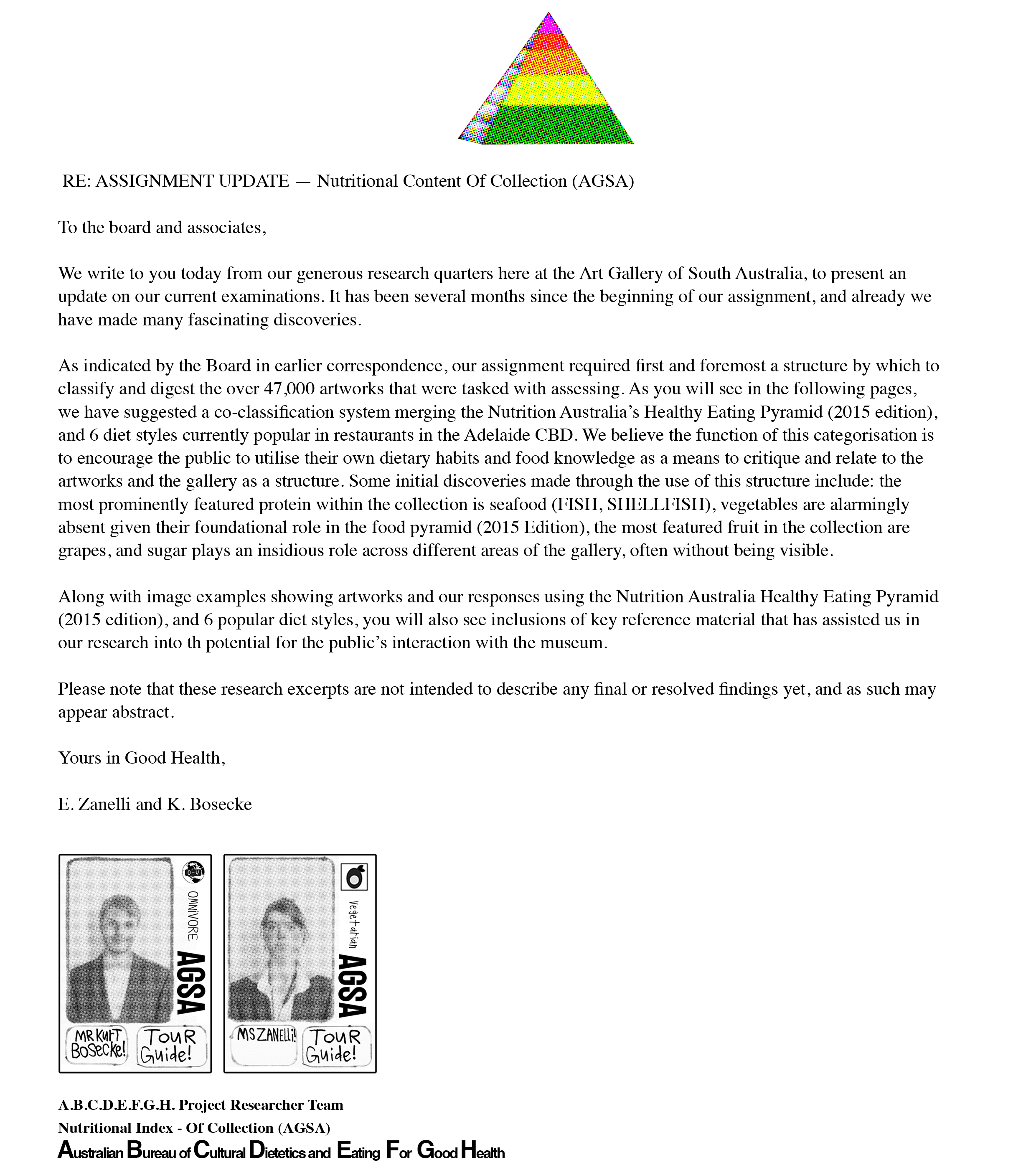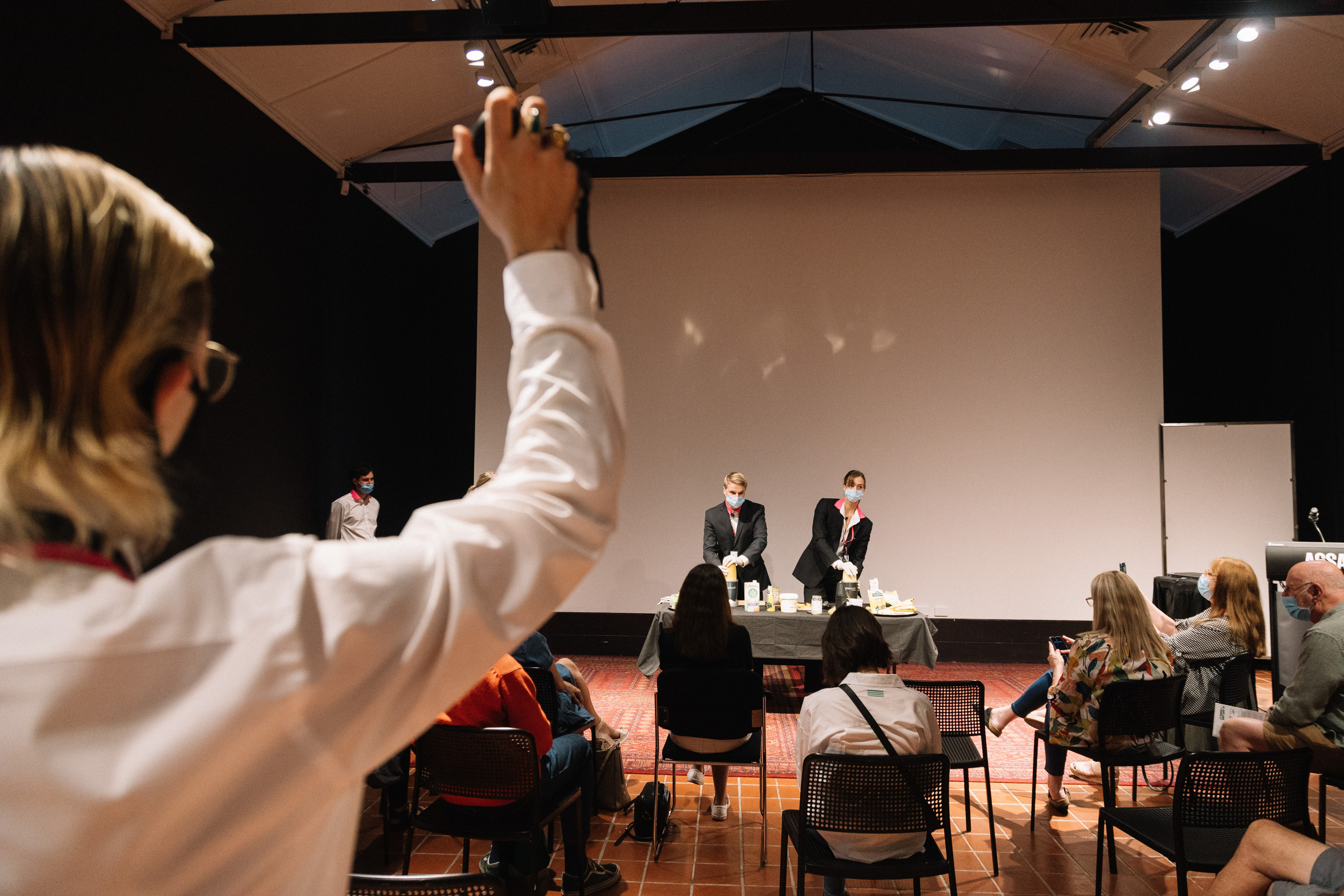Pocket Money
Current work in progress 2025


Single Channel HD video, surround sound. Not sure how long yet.
Director: Emmaline Zanelli
Cinematographer: Liam Somerville
Additional videography: Maryada Rehling
Lighting: Liam Somerville
Text: Autumn Royal
Additional lighting: Eloise Holoubek
Editing: Liam Somerville
Sound recording and mixing: Mat Morison
Musicians: Norwood International High School Drum Corps: Jai Castello, Armin Taheri, Elias Mazreah, Carol Freddy, Punnapat Kongraksawech, Harrison Cadd, Sydney Morton-Wight
NIHS Drum Corps Teacher: Yohan Lee
Participants: Emily Pavlovic, Marlie Cummings, Ciara Spencer, Aieshewarrya Kapoor, Evan Trieu, Ivy Kruckemeyer, Scarlett Casley-Smith, Levi Graetz, Bonnie & Angus McClure, Lui Endersby, Bilal Hiyat, Blane Thew, Pippin Williamson, Akira Lim, Petra Zanker, Jai Castello, Marley Skinner
Producer: Alice McCool
I take care of what’s mine
2023-2024
2 channel video with sound, 24 minutes
commissioned by Adelaide Film Festival X UniSA Samstag Museum of Art EXPAND Lab
Supported by Creative Australia
Currently showing at Samstag Museum of Art during the Adelaide Film Festival - 11 October - 29 November 2024
> Read a review written by Allison Chhorn of this work and the two other EXPAND Lab commissions by Susan Norrie and Matthew Thorne in Artlink here.








Directed by Emmaline Zanelli
Cinematography by Liam Somerville, Katrina Penning
Editing by Liam Somerville
Text by Thomas McCammon & Autumn Royal
Music by Mat Morison (Behringer 2600), Nicole Hobson (soprano, alto, tenor and baritone saxophone), Zeno Kordov (drums).
Music mix by Mat Morison
YOUTH WORKSHOP CREW:
Videography (featured in final cut) by Caleb C, Evangeline C, Tayla A, Alys W, Leon B, Cristine J, Jake P, Bianca F
Writing & concept development workshop team Bianca Fernando, Lylah Penhall, Karman C, Cristine J, Kyle E
PERFORMERS/SITTERS: Charlie B, Jake P, Leon B, Cristine J, Niecy S, Kylah B, Max J, Karman C, Kyle E, Bianca F, Evangeline C, Evelyn C, Caleb C
GENERAL FILM WORKSHOP CREW: Alys W, Henry, William-Beau (Bill) F, Tully H, Chelsea B, Alyssa B, Alex L, Cooper R, Tilly Matilda A, Shayla C, Max J, Rhys M, students at Roxby Downs Area School and children at Roxby Downs kindergarten.
WORKSHOP FACILITATORS: Emmaline Zanelli, Liam Somerville, Thomas McCammon, Autumn Royal, Benen Hamon, Eloise Fuss, Katrina Penning
MENTOR: Lara Thoms.
Magic Cave
20246.5m x 4m x 3.8m
bird, mouse, rat, cat, dog, hermit crab and bird cages, plastic tunnels, toys, LED lights


This sculpture grew from research I began in early 2023 into the social culture and family dynamics surrounding the mining industry in South Australia, with a focus on youth. This sculpture responds specifically to Roxby Downs, a remote town 600km North of Tarndanya (Adelaide). Established in 1988 on Kokatha Country, Roxby Downs is a purpose-built community founded to service BHP’s Olympic Dam mine.
Over the course of several research trips to Roxby, I conducted a series of workshops with young people from 4-18 years old. These sessions included filming, sound recording, and creative writing, and were co-facilitated with other artists and writers. Influenced by the young people I met and their interests, Magic Cave is an absurdist fantasy interpretation of life underground. Combining feelings of doom and play, materials that are reminiscent of childhood joy also speak to confinement, confusion and entanglement.
How can the work of a family member shape the lives of the entire family?
The use of mouse, bird, rat, rabbit, guinea pig, cat, hermit crab and dog cages is influenced by the presence of exotic pets in Roxby, including macaws, scorpions, a hairless cat, snakes, and barking geckos. But the cages also reflect on what it means to possess something precious. I made this work to explore how the personal and domestic are inextricably enmeshed within much broader social systems of economy, labour and value.
The co-facilitators on the youth workshops mentioned above were Liam Somerville, Thomas McCammon, Autumn Royal, Benen Hamon, Katrina Penning, and Eloise Fuss. This project is closely connected to I take care of what’s mine, and my research has been supported by the University of South Australia Samstag Museum and the Adelaide Film Festival EXPAND Lab commission fund.
Presented by Firstdraft in partnership with Adelaide Contemporary Experimental (ACE) Gallery.








> Read a response to Magic Cave by Michelle Wang in FinePrint here.
> Read the catalogue for ACE Gallery’s Studios 2024 exhibition, with an essay by Bec Gallo on Magic Cave below.
Nutritional Index
collaboration between Emmaline Zanelli & Kurt Bosecke1.5 hour live performance, two channel video work, mixed media image works, 2021 - 2022



















Nutritional Index was part of a broader project curated by Belinda Howden, titled Reaching Out wherein Tutti Arts partnered with three South Australian cultural institutions to facilitate three pairs of artists to respond to their collections. Kurt and I were one of these pairs, and we were invited to create a new work in response to The Art Gallery of South Australia (AGSA) and their permanent collection.
Over 12 months, Kurt and I had behind-the-scenes access to understand the inner workings of the gallery, meeting and interviewing many different staff members including curators, librarians, volunteers, installers, builders and security staff. This, paired with Kurt’s interest and rich knowledge of food and nutrition, guided us to first develop a performance work called Nutritional Index, a series of mixed media images, a map, and a two channel video work.
The performance work sees Kurt and I play hybrid characters – nutritionists and art historians from the Australian Bureau of Cultural Dietetics Eating For Good Health (A.B.C.D.E.F.G.H.).
Over 12 months, Kurt and I had behind-the-scenes access to understand the inner workings of the gallery, meeting and interviewing many different staff members including curators, librarians, volunteers, installers, builders and security staff. This, paired with Kurt’s interest and rich knowledge of food and nutrition, guided us to first develop a performance work called Nutritional Index, a series of mixed media images, a map, and a two channel video work.
The performance work sees Kurt and I play hybrid characters – nutritionists and art historians from the Australian Bureau of Cultural Dietetics Eating For Good Health (A.B.C.D.E.F.G.H.).
Throughout the tour Kurt and I speak to several artworks on display within AGSA’s galleries, using nutrition as a lens through which to understand the works in a different light. Audience members are issued with level 3 security clearance lanyards upon arrival, and we are accompanied by 4 security staff (played by members of The Bait Fridge), and after 1 hour of moving through the galleries, we finish the tour with a Nutribullet smoothie using ingredients referencing the artworks throughout the tour.
Following the tours, Kurt and I are working with a third collaborator, Eloise Holoubek, to make a video work relfecting on our time working in the collection, called The Impressive Vibrant Fantasy Buffet: Five Essential Rules to Achieve a Rodin Torso in Under Two Months (see below for a preview). The two channel video work was featured at the Art Gallery of South Australia during SALA Festival in August 2022. The video work was awarded both the Digital
Nutritional Index was supported by Tutti Arts, the Art Gallery of South Australia, The Department of Premier and Cabinet, and the Adelaide Fringe Festival. I would like to express my deepest thanks to project curator Belinda Howden, for her amazing efforts and support in the development and delivery of this work.
Following the tours, Kurt and I are working with a third collaborator, Eloise Holoubek, to make a video work relfecting on our time working in the collection, called The Impressive Vibrant Fantasy Buffet: Five Essential Rules to Achieve a Rodin Torso in Under Two Months (see below for a preview). The two channel video work was featured at the Art Gallery of South Australia during SALA Festival in August 2022. The video work was awarded both the Digital
Nutritional Index was supported by Tutti Arts, the Art Gallery of South Australia, The Department of Premier and Cabinet, and the Adelaide Fringe Festival. I would like to express my deepest thanks to project curator Belinda Howden, for her amazing efforts and support in the development and delivery of this work.
Dynamic Drills
2019 - 2021
Dynamic Drills proposes that memory is a group exercise, and furthermore, it is work. Drawing on my paternal grandmother, Mila Zanelli, and her history as a manufacturing worker, these videos experiment with parallels between the aesthetics of manufacturing, the functions of memory, and the relationship of the body with the machine. Mila has been a manufacturing worker across multiple different industries including the car, wool, poultry and fashion industries, and her mother also worked in manufacturing, in a mother-of-pearl button factory. A foundational element of all manufacturing is repetition — many people performing the same or similar tasks all at once, a mass choreography of pushing forward, pumping out, following patterns. Over the course of a 30-minute montage, Mila and I engage in combinations of functional, futile and symbolic work and exchange. Dynamic Drills suggests a procedure for formulating and distributing legacy using the home as a factory.
The metaphor of the machine plays a central role in the project. Placed in contrast to our DIY constructed domestic work and training zones, are voiceovers of my grandmother reciting appropriated texts taken from Italian Futurist manifestos. The early 20th century futurists dreamt of (and fought towards) a hyper-mechanised future, where mass industrialisation and technological advancement would mean that the gap between the human and the machine would dissolve, and people could abandon the weight of tradition. For my grandmother and I, these manifestos have functioned to draw new parallels between the home and the factory floor through the absurd metaphors of the futurists, but have also helped us to find conviction in our beliefs in the certain aspects of memory production, transfer, and training that cannot be explained through the metaphor of the machine, and instead require more abstract interpretation.
Themes of labour, family relationships, and the connection of the body and the machine were fundamental from the beginning of Dynamic Drills. However, more recently the work has also increasingly brought up questions surrounding care, ageing, worth/value and support, which have begun to guide the project.









 Installation view at ACE Open. Photo by Sam Roberts.
Installation view at ACE Open. Photo by Sam Roberts.Dynamic Drills, 3 channel video projection with sound, 31 minutes 52 seconds. Please note this video compiles 3 channels into one video and as such the subtitles become very small in this Youtube version. You will need to go full-screen to be able to read captions - and it can be difficult on a phone.
Installation view at Meat Market Stables. Video by Angus Scott.